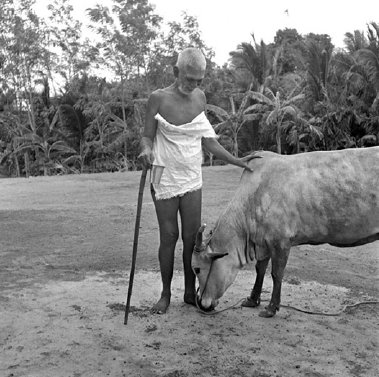
Bhathen
-
Content count
223 -
Joined
-
Last visited
Posts posted by Bhathen
-
-
Can qigong be practiced by someone whose internal organ, e.g., gall bladder, or spleen, has been removed?
-
 2
2
-
-
On 3/7/2022 at 4:25 PM, dawn90 said:The concentration is on the full length of inhalation and exhalation and not the physical structure of the nose.
https://www.lakshmanjooacademy.org/kashmir-shaivism/practice/
The first few meditations of Vijnana Bhairava Tantra deal with the details of the breath (the first being anapana)
-
On 3/1/2022 at 7:24 PM, Bindi said:What would be the use of concentrating on a point far along in the journey when the earlier places haven’t first been attended to. IMO it would make for a very lopsided result, and as such not useful.
or perhaps?
Spoiler On 2/27/2022 at 12:54 PM, dawn90 said:
On 2/27/2022 at 12:54 PM, dawn90 said:When they tell you concentrate on the tip of the nose is it really the tip of the nose or if you concentrate on the tip it activates the tip of the nose (the balloon part) but also the nasal septum between the nostrils.
Anapana instruction:
-
Order reminds me of a teacher who was deeply into home organization following the principles of Marie Kondo. The more everything was set to order. the more the mind became constrained and unaccepting of the outside world (maybe not all cases).

-
 1
1
-
-
Is there a special significance for nine/ ten days?
Navarathri seems to be the female counterpart, similar with nine days of fasting ending on the tenth day. The process seems to start with Ganesh Chaturthi, (opening of the root chakra perhaps?) leading to the nine days of fasting and ending with Diwali or something similar. Is someone's enlightenment day associated with these set of events and dates in Indian history?
-
 1
1
-
-
QuoteI'm doing some research and would appreciate it if anyone here had direct experience with that, or if you know references to texts on it.
Experiments on Swami Rama by the Menninger foundation
(Links to a PDF)
-
 2
2
-
-
Indian acupuncturists who usually have a diploma or certification don't seem to have a comprehensive understanding of the system. Would prefer a TCM doctor instead.
The TCM acupuncturist I have gone to, fixes the issues of most of his patients with 2 or 3 sessions.
-
 1
1
-
-
QuoteOrigin of Lakshmi the Ashram Cow
 Sri Ramana patting Lakshmi - image from
Sri Ramana patting Lakshmi - image from An Introduction to Sri Ramana's Life and Teachings - David Godman talks to John David Page 5
An Introduction to Sri Ramana's Life and Teachings - David Godman talks to John David Page 5
A villager had a dream in which he was told to offer his next calf to Ramanasramam. He brought his cow and the calf to Bhagavan. The jungle around the Ashram was thick at that time and there were cheetahs. The Ashram people were perplexed and refused the offer, but the villager was taking his dream seriously and would not take the calf away. The mother cow had to remain with the calf to feed her. Finally, the cow and the calf were entrusted to a devotee in the town. The calf became the famous cow Lakshmi. She grew up and had three calves within a few years. She would come daily to the Ashram to have her meals, graze on the Ashram land, enter the Hall and sit contentedly near Bhagavan. In the evening, she would go back to the town as other women did.
Once Lakshmi came into the Hall. She was pregnant at that time. It was after lunch time when Bhagavan was reading the newspapers. Lakshmi came near and started licking the papers. Bhagavan looked up and said: "Wait a little, Lakshmi." But Lakshmi went on licking. Bhagavan laid his paper aside, put his hands behind Lakshmi's horns and his head against hers. Like this they stayed for quite a long time. I stood nearby looking at the wonderful scene. After some ten minutes or so, Bhagavan turned to me and said: "Do you know what Lakshmi is doing? She is in Samadhi."
I looked at her and tears were flowing in streams down her broad cheeks. Her breathing had stopped and her eyes were fixed on Bhagavan. After some time Bhagavan changed his position and asked: "Lakshmi, how do you feel now?" Lakshmi moved backward, as if reluctant to turn her tail towards Bhagavan, walked round the Hall and went out.
Shantammal, Eternal Bhagavanhttps://sriramanamaharishi.com/animals-birds/ramana-maharshi-and-animals/
-
 1
1
-
-
Maybe something like gibberish meditation might help release pent up stuff
QuoteDo this meditation at least three hours after eating food. Total Duration: 30 minutes
Step 1: Duration: 10 minutes
Be in a standing posture. Shake the whole body from head to foot as if shaking a tree from the root. This awakens all your unused energy centers and makes the whole body fluid. Shake vigorously.
Step 2: Duration: 10 minutes
Sit down wherever you are. Whatever sound appears in your mind, just vocalize that sound. It should be like gibberish, not words. It may be hidden irritation, worry, or anger. If you carry these irritations in your system, it may imbalance your pitta, so let them out completely.
Step 3: Duration: 10 minutes
Sit silently and just be a witness. Don’t create, sustain, destroy or judge anything that rises in your mind.
Osho's dynamic meditation also is a easy way to release stored patterns, maybe start with 5 mins for each stage.
-
 1
1
-
-
It is best to consult a doc for a better diagnosis wrt your inability to eat. (Recent experience of a family member)
Perhaps lemonade with a pinch of salt might help with nausea.
-
 1
1
-
-
-
On 10/3/2021 at 10:44 AM, Creation said:The full system of Daoist cultivation is more like Sri Babaji's system in that way, there is a huge list of practices and processes to engage with. I wonder if there are other techniques in Sri Babaji's system which are similar to characteristically Daoist practices. Daoism has a whole process around filling dantian, consolidating jing, and changing the tissues of the body, for instance, which ultimately prepare the body to be able to take in more light (according to my limited, beginner understanding). I wonder if there are analogues of this in the more thorough (i.e. complicated
 ) Hindu traditions.
) Hindu traditions.
Have read that Babaji was trained under three Tamil Siddhars, who were masters of alchemy, linguistics, mantra, yoga etc. which might be the reason for the Daoist similarities. The Kriya techniques through Sri Yogiraj lineage were perhaps designed for this particular period of time for a particular set of practitioners.
-
@freeform Can you please add more details on this:
QuoteRather than finding where your focus is originating (which is a thing, but not for this practice) - find where this substance is hanging out - in and around your body.
Something seems to have changed in the past few months and it seems a razor sharp mental focus has disappeared. Would like to know if there are methods to work on that? What actually is focus?
-
 1
1
-
-
Does the healer have a past life connection to those they heal?
-
On 8/30/2021 at 4:49 AM, Vajra Fist said:Is it possible do you think to eventually tune into the vibration of this sound by listening to it chanted by others?
Yes, just listening to the chants on youtube helps tune in to the the vibration, esp. with my experience with Om Mani Padme Hum and some Hindu ancient chants. Some chants are very powerful that they are best avoided listening to continuously if you are already into some practice.
On most of the points mentioned, I disagree with Maharishi. Around two decades back was initiated into TM, around the same time was into Om, Aum and Im (as in him) chanting as well. Always felt TM had a pleasant experience, maybe an introduction to meditation. If the the physical and energetic bodies are well prepared the benefits maybe enhanced; but I would not recommend it for a lifetime of practice.
-
 1
1
-
-
What would be the difference between chanting Om and the mantra initiated for TM meditation? Wouldn't Om be a better choice with no fees attached to it?
-
@Shevek Thank you for sharing the video...looks like the simple routines taught to me by a yoga cum holistic teacher seems to be related to the video you shared as well as this one:
-
 1
1
-
-
1 hour ago, manitou said:Why is it important that it is not qigong based, just out of curiosity? Are you giving a class?
I had injured my knee muscle or nerve while doing the exercises advised by the physiotherapist. Over the last two months, there has been no improvement from therapy, resulting in a significant loss of energy. Tried acupuncture once and am now waiting for it to heal on its own. Joint-loosening type of exercises have been good for now but the above exercise feels better.
Qigong appears to be incompatible with my practice or it might be that one of them amplifies the other by a thousand times. Began practicing qigong for health reasons and experience taught me that it was a universe unto itself. It was the reason for me joining the wonderful TDB community and has led to a deeper understanding in many aspects.
-
 1
1
-
-
20 hours ago, manitou said:It was a joke, a very bad one apparently
@manitou, u just told it to the wrong person .... it usually takes me ages to understand some of them.

The above exercise has been practiced for about 30 years in Master Thich Naht Hanh's monastery. They have two more - Ba Dua Jin and staff work based on Qigong. Came across this light and relaxed routine ... just want to make sure it was not qigong or something like that.
-
 1
1
-
-
33 minutes ago, manitou said:Yes. I do know what it is. They are slow motion burpees.
Hearing of burpees for the first time.
"burpees are basically a combination of three individual strength moves: a plank, a push-up, and a squat."
" The burpee, a squat thrust with an additional stand between reps, is a full body exercise used in strength training. "
The above exercises don't seem to include planks, push-ups or squats though it is seems to be a full-body routine.
-
Am not sure the kind of practice these exercises are based on? Does not seem to be like yoga.
Updating the details about the exercise:
From Plum village:
These mindful movements are not practiced in order to attain a goal like fitness or health, but to experience happiness, joy, and connectedness, right away, while performing them.
According to Thich Nhat Hanh, “The ancestral teacher who first taught these movements was a British educator, sociologist, and philosopher by the name of Herbert Spencer. He was quite an unusual philosopher, because he was not so much interested in speaking but in practicing what he spoke about.
“About 60 years ago, I learnt about the Ten Mindfulness Movements of Herbert Spencer. After that I embellished them in five ways:
➛ Making the movements more soft and flowing
➛ Adding mindful breathing
➛ Making the movements follow successively, one upon the other
➛ Making them a practice of mindfulness. For Spencer, [they] were simply physical exercises to promote health
➛ Practising the mindfulness movements not [in order] to have health and happiness in the future, but to have happiness here and now, right while we are doing them. -
-
Thanks @Taomeow , had forgotten them, but your post reminded me of two fantastic soaps we had in our house growing up.
-
 1
1
-
-
Though the topic is about not using soap, linking about the sesame oil bath procedure:
https://www.hindujagruti.org/hinduism/why-is-ubtana-applied-to-the-body-before-abhyangasnana
- Warm the oil (pour approximately ¼ cup into a mug and warm using a coffee-cup warmer.) Test the temperature by putting a drop on your inner wrist, oil should be comfortably warm and not hot
- Sit or stand comfortably in a warm room
- Apply oil first to the crown of your head (adhipati marma) and work slowly out from there in circular strokes—spend a couple of minutes massaging your entire scalp (home to many other important marma points—points of concentrated vital energy)
- Face: Massage in circular motion on your forehead, temples, cheeks, and jaws (always moving in a upward movement). Be sure to massage your ears, especially your ear-lobes—home to essential marma points and nerve endings
- Use long strokes on the limbs (arms and legs) and circular strokes on the joints (elbows and knees). Always massage toward the direction of your heart
- Massage the abdomen and chest in broad, clockwise, circular motions. On the abdomen, follow the path of the large intestine; moving up on the right side of the abdomen, then across, then down on the left side
- Finish the massage by spending at least a couple of minutes massaging your feet. Feet are a very important part of the body with the nerve endings of essential organs and vital marma points
- Sit with the oil for 5-15 minutes if possible so that the oil can absorb and penetrate into the deeper layers of the body
- Enjoy a warm bath or shower. You can use a mild soap on the “strategic” areas, avoid vigorously soaping and rubbing the body
- When you get out of the bath, towel dry gently. Blot the towel on your body instead of rubbing vigorously
According to ayurveda:
Sesame seed oil bath twice a week is beneficial to remove excess heat from the organs and to remove blockages from the nadis/meridians. According to the flow of energy in the ida and pingala; Saturday, Wednesday benefits men; Tuesday, Friday benefits women. The energy flow becomes balanced in all the three - ida, pingala and sushmana nadis. New moon days have an increased flow in the sushmana early in the morning.
Herbal bath powder used in an oil or normal water bath can be dry chickpeas powder or a mix of herbs including rose, turmeric, cuscus, bay leaf, liquorice, basil, senna etc.
-
 4
4
-
 1
1

Qigong without internal organs?
in Daoist Discussion
Posted
Thank you @Taomeow